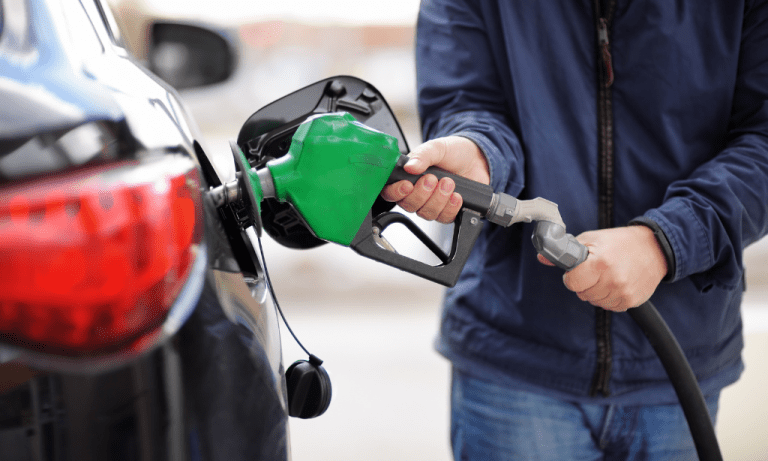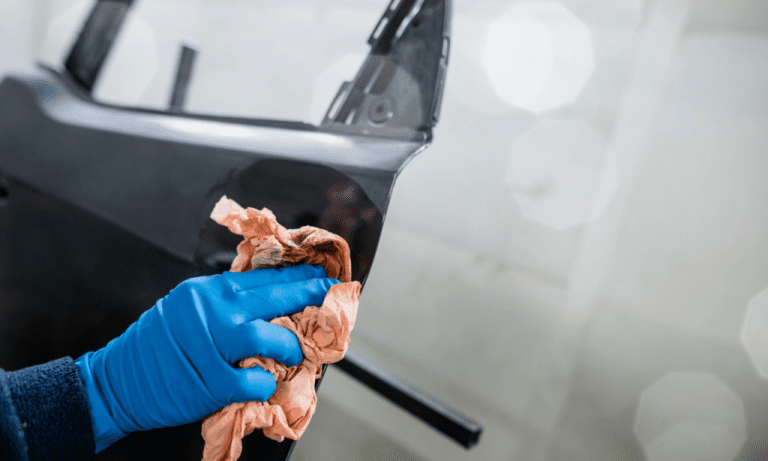Low Beam Vs High Beam Headlights [A Clear Guide]
Low beam headlights are used in normal driving conditions and provide adequate visibility without blinding other drivers. High beam headlights are used in dark or poorly lit areas where maximum visibility is required.
In such situations, high beams should be switched off when approaching oncoming traffic or when driving behind another vehicle. Headlights play a crucial role in ensuring driver safety, especially during nighttime or in low visibility conditions. However, knowing when to use low beam headlights versus high beam headlights can sometimes be confusing.
We will discuss the distinct purposes and appropriate usage of low beam and high beam headlights. Understanding these differences will help you navigate the road safely and be considerate to other drivers. So, let’s delve into the specifics of when to use each type of headlight and why it matters for your safety on the road.
Understanding Low Beam And High Beam Headlights
Low beam and high beam headlights are essential components of a vehicle’s lighting system, providing visibility and ensuring safety while driving at night or in low light conditions. Each type of headlight serves a specific purpose, and it’s important to know when to use each to maximize visibility without blinding other drivers on the road.
What Are Low Beam Headlights?
Low beam headlights, also known as dipped headlights, are designed to provide sufficient illumination for driving in normal conditions. Here are the key points to understand about low beam headlights:
- They emit a focused beam of light that illuminates the road ahead while minimizing glare for oncoming drivers.
- Low beam headlights should be used in various situations, including driving in urban areas, encountering other vehicles, or in foggy weather.
- These headlights are angled slightly downwards to illuminate the road near the vehicle, ensuring a safe driving experience.
- The light output of low beam headlights is typically lower than high beam headlights, providing adequate visibility without impairing the vision of other drivers.
What Are High Beam Headlights?
High beam headlights, also referred to as main beam headlights, offer increased visibility in challenging driving conditions. Here are the key points to know about high beam headlights:
- They produce a brighter and more intense beam of light that extends further down the road, improving visibility at longer distances.
- High beam headlights are suitable for use in areas with little to no lighting, such as rural roads or highways with few other vehicles.
- These headlights should not be used when there is oncoming traffic or in the presence of other vehicles ahead, as the intense light can blind other drivers and cause accidents.
- High beam headlights are designed to provide maximum visibility, effectively illuminating the road and surroundings.
Remember, the improper use of either low beam or high beam headlights can pose safety risks, so it’s crucial to know when to switch between the two. By using low beam headlights in the appropriate situations and activating high beam headlights when necessary, you can ensure clear visibility and safer journeys for yourself and others on the road.
Stay vigilant and prioritize the well-being of everyone on the road by using your headlights responsibly.
Differences Between Low Beam And High Beam Headlights
Low beam vs high beam headlights – when to use each
Whether you’re navigating through dark and dimly lit roads, or driving in unfavorable weather conditions, having the right headlights is crucial for a safe and comfortable journey. In this section, we will delve into the differences between low beam and high beam headlights, shedding light on when to use each option.
Light Intensity And Beam Pattern
- Low beam headlights:
- Emit a focused and downward-facing beam of light that illuminates the road directly in front of the vehicle.
- Provide sufficient visibility for driving in urban areas or on well-lit highways.
- Typically have a light intensity that doesn’t blind oncoming drivers or cause excessive glare.
- High beam headlights:
- Illuminate a wider area with a brighter and more intense light.
- Offer greater visibility in rural or poorly lit areas where there are fewer sources of outside illumination.
- Have a higher light intensity that enables the driver to see further ahead.
Range And Distance Of Visibility
- Low beam headlights:
- Provide a shorter range and distance of visibility.
- Are designed to illuminate the road up to a certain distance to ensure the driver can see obstacles and traffic ahead clearly.
- Are ideal for driving at moderate speeds and in traffic conditions that require constant adjustments.
- High beam headlights:
- Offer an extended range and distance of visibility.
- Allow the driver to see a greater distance ahead, which is helpful for detecting potential hazards or obstacles in the road early.
- Are suitable for driving at higher speeds and in areas with minimal or no traffic.
How Headlights Affect Other Drivers On The Road
- Low beam headlights:
- Emit a lower light intensity that minimizes the risk of blinding other drivers.
- Feature a downward-facing beam pattern that reduces glare and prevents discomfort to oncoming traffic.
- Are essential when driving at night or in heavy traffic to ensure the safety and comfort of other road users.
- High beam headlights:
- Have a higher light intensity that can cause glare for oncoming drivers.
- May impair the vision of other drivers and make it difficult for them to see the road clearly.
- Should be used responsibly and only when there are no oncoming vehicles or while overtaking.
Using the appropriate headlights for specific driving conditions is vital for both your safety and the safety of others on the road. Remember to switch between low beam and high beam headlights accordingly to optimize visibility and minimize the risk of blinding fellow motorists.
When To Use Low Beam Headlights
Driving at night can be challenging, especially when visibility is compromised. One important aspect of ensuring road safety is using the appropriate headlights for different driving conditions. In this section, we’ll focus on low beam headlights and when they should be used.
By understanding when to use low beams, you can enhance visibility, comply with regulations, and ensure a safer driving experience.
Ideal Driving Conditions For Low Beams
When it comes to driving at night, it’s essential to use low beam headlights in the following situations:
- On poorly illuminated roads: Low beams help to enhance visibility on roads that are not well-lit. By casting light directly in front of your vehicle, these headlights allow you to see potential hazards and threats sooner, reducing the risk of accidents.
- In foggy or misty weather: Low beams are particularly effective in foggy or misty conditions as they prevent light from reflecting back to the driver, reducing glare and providing better visibility.
- During heavy rain or snowfall: Similarly, low beam headlights prove beneficial during heavy rain or snowfall. By illuminating the road surface, they improve your ability to navigate through inclement weather conditions.
- In the presence of oncoming traffic: It’s important to use low beams when approaching or being approached by other vehicles. High beams can dazzle and temporarily blind oncoming drivers, creating a hazardous situation.
Enhancing Visibility In Urban Areas
Low beam headlights are also crucial in urban areas, where there is usually a higher concentration of pedestrians and other vehicles. Here’s why:
- Navigating crowded streets: Low beams allow you to better observe your surroundings in congested urban environments. They illuminate potential obstacles, such as pedestrians or cyclists, helping you react quickly to ensure everyone’s safety.
- Illuminating road signs and markings: Properly lit road signs and markings are essential for navigation. Low beams ensure that these crucial visual cues remain visible, enabling you to follow traffic regulations and make informed driving decisions.
- Reducing glare from reflective surfaces: Urban areas often have reflective surfaces, such as buildings, glass windows, and road signs. Low beams minimize glare from these surfaces and help maintain clear visibility on the road.
Rules And Regulations For Using Low Beams
Obeying rules and regulations regarding the use of low beams is essential for safe and lawful driving. Here are some key points to remember:
- Be aware of local laws: Familiarize yourself with the specific regulations regarding headlight usage in your region. Laws may differ, so understanding the requirements ensures compliance with local standards.
- Switch to low beams at the right time: As a general rule, switch to low beams when there is an oncoming vehicle within a safe distance, and also when you’re following another vehicle closely. This helps avoid causing discomfort or temporary blindness to drivers ahead or opposite you.
- Use low beams in built-up areas: When driving through residential areas, towns, or cities, switch to low beams. This helps minimize glare for pedestrians and other road users.
By using low beam headlights in the appropriate situations, you can enhance your visibility, comply with regulations, and contribute to safer roads for everyone.
Remember, adapting your headlights to the driving conditions not only ensures your safety but also that of other road users. So, stay alert, use your low beams when needed, and drive responsibly.
Now that we’ve covered the appropriate situations for using low beams, let’s explore the scenarios where high beam headlights are more suitable. Stay tuned for the next section!
When To Use High Beam Headlights
Driving at night can be challenging, especially when visibility is limited. High beam headlights are a crucial tool that can significantly enhance your vision on the road. However, it’s important to understand when it’s appropriate to use them to avoid blinding other drivers.
Here are some situations when using high beam headlights is recommended.
Ideal Driving Conditions For High Beams
When the road conditions are favorable and there are no oncoming vehicles, high beam headlights can provide several benefits, including:
- Enhanced visibility: High beams emit a brighter light, allowing you to see further ahead and better navigate the road.
- Identification of hazards: The increased illumination can help you spot potential obstacles, such as pedestrians, cyclists, or animals, well in advance, giving you more time to react and avoid accidents.
- Clear road signs: High beams can illuminate road signs more effectively, making it easier for you to read and follow directional information, especially in poorly lit areas.
Improving Visibility On Dark And Deserted Roads
High beam headlights are particularly useful when you find yourself driving on dark, unlit roads with minimal traffic. Here’s how they can help:
- Greater range: High beams have a longer throw of light, enabling you to see objects in the distance more clearly. This is especially beneficial when driving through rural areas or during nighttime road trips.
- Peripheral vision: High beams illuminate a wider area, significantly improving your peripheral vision. This can be crucial when driving through winding or unfamiliar roads, as it helps you spot any potential dangers from the sides as well.
- Overcoming poor weather conditions: In fog, rain, or snow, high beams can break through the adverse weather and provide better visibility by cutting through the haze or precipitation.
Rules And Regulations For Using High Beams
It’s essential to use high beam headlights responsibly and in accordance with traffic laws. Here are some guidelines to follow:
- Turn off high beams when approaching oncoming vehicles or when following closely behind another vehicle. The intense light can blind drivers, potentially leading to accidents.
- Be aware of the distance between your vehicle and others on the road. If you notice that the high beams are causing discomfort or reflection in other drivers’ mirrors, toggle them to low beams.
- Always use high beams judiciously and switch back to low beams when approaching an urban area, where streetlights or well-lit surroundings provide sufficient visibility.
- Regularly check and adjust your headlights to ensure they are properly aligned and not aimed too high, as this can create glare and obstruct other drivers’ vision.
Remember, the primary goal of using high beam headlights is to improve visibility while ensuring the safety of all road users. It’s important to exercise caution and considerate driving behavior when choosing to engage your high beams.
Using The Right Headlight For Various Scenarios
Navigating through foggy conditions:
- Foggy conditions can significantly reduce visibility on the road, making it crucial to use the appropriate headlights. Here’s what you need to know:
- Low beam headlights are the best choice in foggy conditions.
- High beam headlights can cause glare and reflect back at you due to the fog, reducing visibility even further.
- Low beam headlights have a shorter range but provide better illumination of the road surface.
- Use fog lights in conjunction with low beam headlights for better visibility in foggy conditions.
Dealing with oncoming traffic:
- When driving at night and facing oncoming traffic, it’s essential to use your headlights correctly to avoid blinding other drivers. Consider the following:
- Use low beam headlights when encountering oncoming traffic to prevent blinding other drivers.
- High beam headlights can dazzle and impair the vision of drivers approaching from the opposite direction.
- Switch to low beam headlights in advance when you see another vehicle approaching from a distance.
- Always be mindful and courteous of other drivers, especially in areas with heavy traffic.
Adjusting headlights in different weather conditions:
- Properly adjusting your headlights can make a significant difference in your visibility during various weather conditions. Keep these factors in mind:
- During rain or snow, adjust your headlights to the appropriate level to enhance visibility without causing glare.
- Low beam headlights are usually sufficient in most weather conditions, providing adequate illumination without reflecting back at you.
- In exceptionally dark or poorly lit areas, you may need to switch to high beam headlights temporarily for better visibility.
- It’s crucial to adjust your headlights correctly to ensure maximum safety and visibility regardless of the weather conditions.
Remember, using the right headlights for specific scenarios is not only essential for your safety but also for the safety of other drivers on the road. Adapting your headlights to different weather conditions, avoiding blinding oncoming traffic, and using low beam headlights in foggy situations are crucial practices to maintain good visibility and prevent accidents.
Stay informed and drive responsibly, ensuring you make the appropriate choices based on the conditions you encounter. Safe driving!
Headlight Maintenance And Safety Tips
Regularly checking and adjusting headlights:
- Inspect headlights regularly to ensure they are properly aligned and facing the correct direction. Misaligned headlights can make it difficult to see the road ahead and can blind oncoming drivers.
- Adjust the height of the headlights so that they illuminate the road without causing glare to other drivers. This can be done using the adjustment screws located near the headlight assembly.
- Test the functionality of the low beam and high beam headlights by turning them on and off. Replace any bulbs that are not working properly.
Replacing bulbs and maintaining proper lighting:
- If you notice that one or both of your headlights are dim or not working at all, it is important to replace the bulbs as soon as possible. Dim headlights can greatly reduce visibility at night or in unfavorable weather conditions.
- When replacing bulbs, always use the correct type and specification recommended by the vehicle manufacturer. Using the wrong bulb can result in poor lighting and may even damage the headlight assembly.
- Take note of the lifespan of the bulbs and replace them accordingly. Typically, halogen bulbs last around 1,000 to 2,000 hours, while led bulbs have a longer lifespan of up to 30,000 hours.
Tips for reducing glare and keeping headlights clean:
- Clean the headlights regularly to remove dirt, grime, and debris that can reduce their brightness. Use a soft cloth or sponge and a mild detergent to gently scrub the headlights. Avoid using abrasive materials that can scratch the surface.
- Apply a protective coating to the headlights to prevent yellowing and oxidation, which can reduce their effectiveness. There are various headlight restoration kits available in the market that can help maintain the clarity of the headlights.
- Adjust the angle of the low beam headlights to minimize glare and prevent blinding oncoming drivers. Aim the headlights slightly downwards to ensure they illuminate the road without causing discomfort to others.
Remember, maintaining your headlights is crucial for your safety and the safety of others on the road. By regularly checking and adjusting your headlights, replacing bulbs when necessary, and keeping them clean, you can ensure optimal visibility and reduce the risk of accidents.
Stay proactive and make headlight maintenance a part of your regular vehicle care routine.
Conclusion
To ensure safety on the road, it’s crucial to know when to use low beam and high beam headlights. Low beam headlights are ideal for regular driving conditions, providing sufficient illumination without blinding oncoming traffic. On the other hand, high beam headlights are useful in areas with limited lighting, allowing for increased visibility at a greater distance.
It’s important to remember that using high beam headlights when not necessary can be hazardous and potentially blind other drivers. By understanding the differences between low beam and high beam headlights and using them appropriately, we can all contribute to safer roads for everyone.
Always be mindful of the driving conditions, traffic, and the needs of other drivers when deciding which headlights to use. So, next time you hit the road, remember to choose wisely and use your headlights responsibly to ensure a safe and enjoyable journey.
- Why Are My Car Headlights Not Bright Enough? - May 9, 2024
- How Long Can You Drive With An EVAP Leak? - May 9, 2024
- What Does B Stand for in a Car? [Full Guide] - May 9, 2024



![How To Easily Unlock a Gmc Sierra Without Keys [Expert Tips]](https://automhelp.com/wp-content/uploads/2023/07/Unlock-a-Gmc-Sierra-Without-Keys-768x461.png)

![How to Reset Stabilitrak [Step by Step]](https://automhelp.com/wp-content/uploads/2023/06/1-14-768x461.webp)

